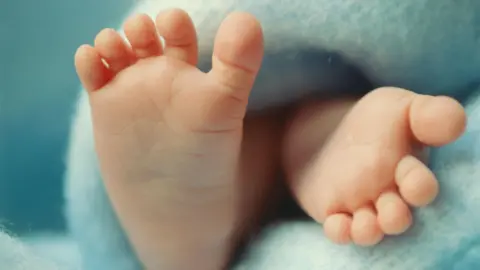Eight children with DNA from three people have been born in the United Kingdom, made possible by experimental technology aimed at preventing incurable genetic mutations.
The majority of human DNA is found in the cell nucleus — it is this genetic material, inherited from our mother and father, that determines our individuality.
However, a small proportion of DNA is found outside the nucleus, in the mitochondria, the cell’s powerhouses. Mutations in mitochondrial DNA can cause serious diseases in children, including muscle weakness, seizures, developmental delays, organ failure and even death.
Genetic testing of embryos for such mutations is usually performed during in vitro fertilisation (IVF). However, in some cases, the analysis does not provide accurate results.
To avoid the risk of transmitting dangerous mitochondrial mutations, scientists have developed a method that uses mitochondria from a donor egg.
The mother’s genetic material (from the egg or embryo) is transferred to a donor egg containing healthy mitochondria but no nucleus of its own. This creates an embryo with DNA from three people: the mother, the father and the mitochondrial donor.
Legislative changes were required in the UK in 2016 to introduce this technology. The method is also permitted in Australia, but is still banned in most countries.
Scientists from Newcastle University (UK) and Monash University (Australia) published data on 22 embryos that underwent this procedure in the New England Journal of Medicine. To date, eight healthy children free of mitochondrial diseases have been born. One woman is still pregnant.
According to Robin Lovell-Badge, a stem cell expert at the Francis Crick Institute, one of the babies had slightly elevated levels of mutated mitochondria. However, he stressed that this level does not yet pose a health risk but requires monitoring in the future.
Dr. Andy Greenfield of Oxford University called the work “an outstanding achievement in science” and noted that the mitochondrial replacement method will only be used in a limited number of cases — when other methods, such as pre-implantation genetic testing, have proven ineffective.
Lovell-Badge also clarified that the amount of DNA from the donor is extremely small and does not affect the individual characteristics of the child. Donor genetic material accounts for less than 1% of the total DNA. “After a bone marrow transplant, the patient will have significantly more foreign DNA than a child born using this technology,” he explained.
Every couple in the UK wishing to use the donor mitochondria method must obtain special permission from the government agency that regulates reproductive technology. Today, 35 patients have received such approval.
